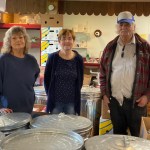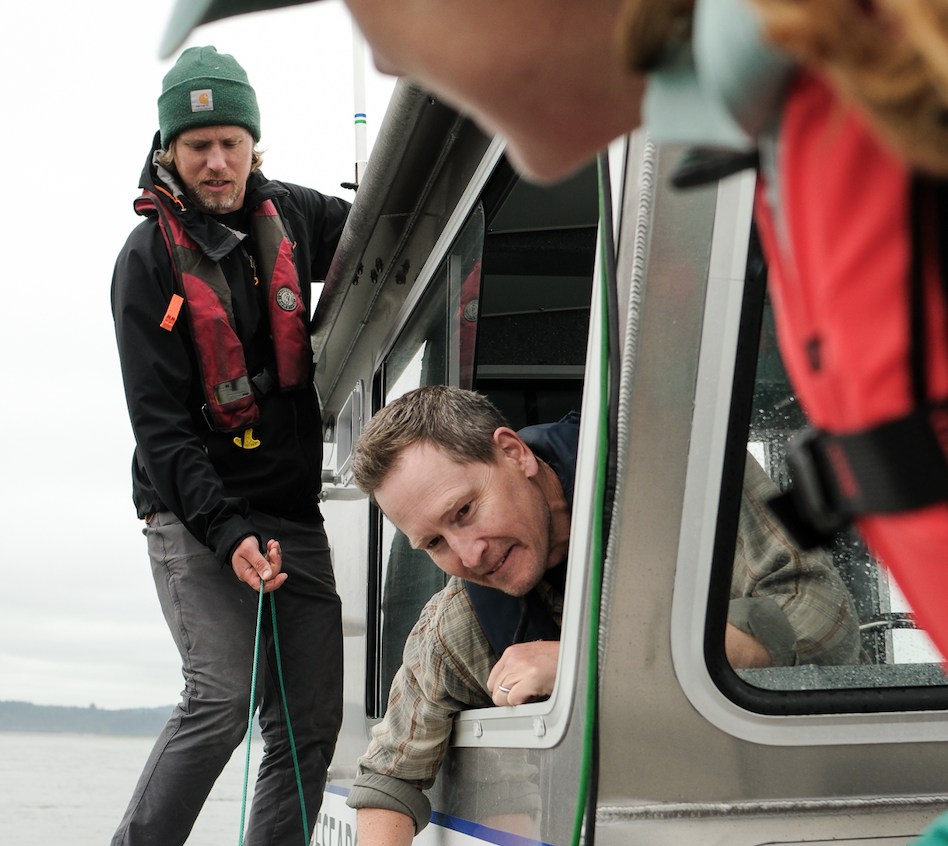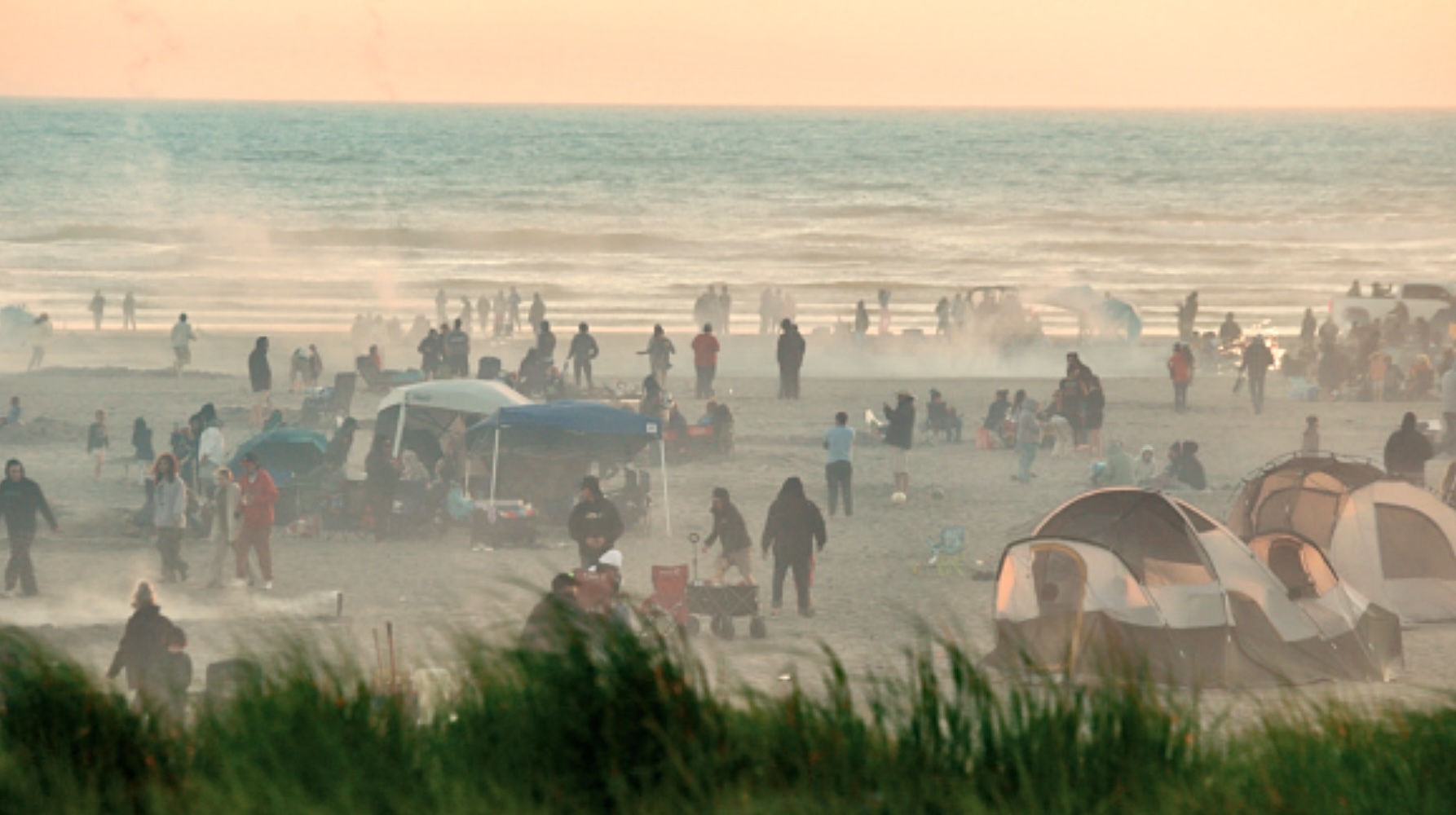Coast Chronicles: Food insecurity worries worsen in rural WA
Published 4:12 pm Thursday, April 3, 2025



Last week’s weather continues in the roller coaster traditions of spring. First raining days, then scary and unruly winds, then a few moments of sun (walk the dog NOW!), before dense clouds return. Still, budding green leaves are everywhere. My climbing rose is waking up; hydrangeas are sprouting; the Asian plum in my yard has become a dramatic poof of white blooms. Even my rhubarb, which looked dead all winter, has wrinkly leaves unfolding. And my parsley, too, has weathered over.
I put potatoes in the ground last week, but I’m told by people in the know that other starts shouldn’t go in until after tax day. BTW did you know that our Ocean Park Timberland Library has a seed library? Stop by to shake out a few lettuce, carrot, or bean seeds; or donate extras you may have.
It’s the time of year to think about growing your own, though most of us don’t come close to producing for daily food requirements. I know it’s possible, but my thumb has only tinges of green. Thank goodness I have the resources to support myself with store bought groceries and, sometimes, locally produced eggs. (Thanks to all our Peninsula hens and chicken-loving friends.) But for some people slicing the pie is dicey — what can we afford this month for rent, food, and medications?
Statewide food issues
Last month a Seattle Times article discussed the growing food insecurity issue. “Hunger is on the rise, and the programs that serve hungry people in our state need significant investments to keep up with current demand. Food banks are on the front lines. Gov. Bob Ferguson recommended $52 million in budget cuts for food banks. At the same time, Congress approved a budget plan that slashes $230 billion from SNAP, the Supplemental Nutrition Assistance Program.” (Article here: tinyurl.com/a36mkftc ).
Last week I spoke with Claire Lane, the Director of Anti-Hunger & Nutrition Coalition in Seattle. Claire’s got her finger on the pulse of both state and national food issues. As she says, “I have a lot of concerns about our rural communities. We have data that shows one in ten Washington families suffer from food insecurity — rural county numbers are probably higher.’
I learned that food pattern disruptions are complex, involving lots of pressure points. Claire continues, “Some funding programs are sun-setting. But it’s not just budget and program cuts. There are still supply chain issues left over from the Pandemic. For instance, five years ago, before the closures, schools distributed milk from large dispensers. Then they needed different packaging for take-out containers and for small milk cartons. Cardboard supplies were a problem.”
Tariffs may hurt our farmers too. Surpluses often go to help local food banks. As Claire says, “Farming takes whole seasons to respond, and agricultural seasons do not align with fiscal years. But I want to give enormous credit to our Washington State Department of Agriculture. They have been very creative in addressing these problems.” (I’ll keep my eye on this issue as state and federal budgets get clarified.)
Local food banks
I also checked with folks at our Ilwaco and Ocean Park food banks. Pretty much everyone is saying the same thing. “We’re all seeing an increase in the number of families needing food, while our grant programs and monies are being cut.”
Michael Goldberg, Ocean Park Food Bank director, notes, “The big funding cut-offs may not be until July 1 because the fiscal year ends on June 30. But even now things are changing. We get food from scheduled programs and we get money from the state. Our main supplier is Coastal Harvest, but we’re getting less food from them. We also get food from Northwest Coastal Harvest [a separate organization], but we’ve actually been getting less food than we did in other years. We won’t find out the full effects of the changes from the Whitehouse for several months. Our governor is also talking about cutting funds. In March we had 566 families, which included 1488 individuals, and we spent $5,474.00 buying food like eggs, milk, cheese, bread, chicken, and peanut butter. So it’s a scary situation for us.”
One of the Ocean Park Food Bank volunteers, Monika Strum, says, “We’re getting new families signing up every month. Yesterday we had 40 people here picking up food.” Monika moved full-time to the Peninsula in 2020. “Somebody told me the food bank needed volunteers so I thought, ‘I’m a widow. I have time to help’ — so I’m here every Wednesday.”
Also helping the day I stopped by was Linda Nash. “I’m here to pay it forward, and it gets me out of the house and into the community.” Meanwhile Norm Manske, once a truck driver hauling produce — “I hauled for 40 years!” — was sorting a load of produce that had just been delivered. “Our fresh produce comes every Wednesday,” he says, “Today we’ve got carrots, corn, radishes, lemons, oranges, bananas, and apples.”
I point to a box or fat round purple-tinged veggies, “Are those rutabagas?” “Yep,” he says, “Lots of people aren’t too sure how to use those — just peel ‘em and throw ‘em in some boiling water. That’s what my mom used to do,” says Norm. He decided to help out at the food bank because he noticed a lot of people stopping by. “I just thought, I can help, and it keeps me out of trouble.”
Rachel Gana, the director of the Ilwaco Food Bank, sent me data that confirms the growing need in our county. “We served 3,940 individuals in 2019 (pre-pandemic), 5,323 in 2020, 5,319 in 2021, 7,639 in 2022 and 11,764 in 2024. We’ve been told that our supplies won’t change too significantly until the end of the fiscal year, but Greg Pothier who does our reporting to the agencies we receive food from had this to say, ‘It has changed, it has been down about 20% in the last few months, not counting our last delivery. I would guess a 50% or more reduction in July. Just heard on PBS that a $500,000 purchase already made was cancelled and sent back TEFAP, [The Emergency Food Assistance Program]. TEFAP has been between 40 to 45% of our total, whatever Northwest Harvest, and Coastal Harvest have left we might be spread a little thinner. I would say it has changed, now we get (1 or 2) cases of each item. We also get a little bit from EFAP (Emergency Food Assistance Program. We’ll see what happens.’”
How can you help?
In Surfside, where Monika lives, they have twice-a-year cook-offs that are part of their giving back. “We just had a chowder cook-off at the Oysterville Schoolhouse, and we raised $700 to give to the food bank. Usually we give to different charities, but this time we decided the food bank should be our charity for the next one too.”
Monika also talked about the Green Bag program. Anyone can stop by the food bank, pick up a green bag, and sign up to get started. You fill your bag with canned goods, peanut butter, any non-perishable items and set it on your front porch. A food bank volunteer comes by once every month to pick up your donation and leave a new bag. Pick-up dates are April 12, June 14, August 9, Oct. 11, and Dec. 13. (You could also tuck a check inside or drop one by the office.)
“Of course you can always give food or donations in other ways,” Linda mentions. “Someone came in last week because their brother had passed away, and they donated 290 pounds of food from his cupboards. Then they came in the next day with food from his freezer too.”
The Ocean Park food bank is open from 10 a.m. to 2:45 p.m. Tuesday, Thursday, and Friday; and open late from 10 a.m. to 6 p.m. on Wednesdays. The Ilwaco Food bank is open every Friday 11 a.m. to 1 p.m.
I’m grateful both to have the resources to feed myself properly, and to help Peninsula food banks filling in the gaps for folks who aren’t this lucky.
•••
Also, a million apologies to Shelly Hedges and her Lucky Chicken Ceramics for misspelling her name in my column last week. Her contemporary functional pottery is available at the Bay Avenue Gallery (Ocean Park) and the gift shop at Columbia Pacific Heritage Museum in Ilwaco.












